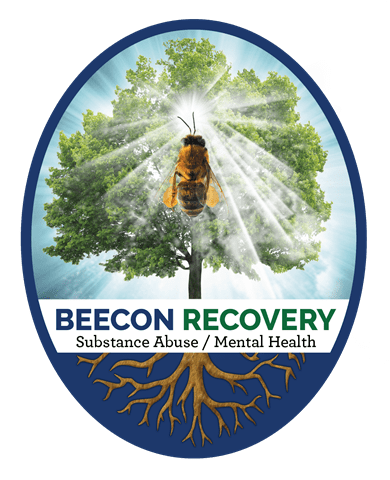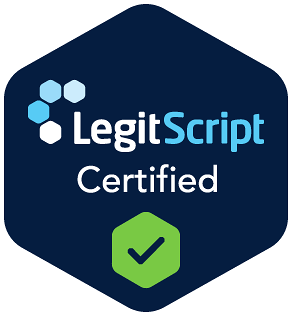Benefits of Guided Imagery in Recovery Plans
Understanding Guided Imagery
Guided imagery is a therapeutic technique that involves using mental visualizations to promote relaxation and healing. In our programs at Beecon Recovery, we utilize this method to assist individuals in tapping into their subconscious mind, helping to create a positive mental environment conducive to recovery. By engaging in guided imagery, clients can visualize successful outcomes, cope with stress, and explore emotional challenges in a safe space.
This practice is grounded in the belief that imagination can influence physical and psychological well-being. Our trained professionals guide participants through exercises, allowing them to construct vivid mental images that foster a sense of tranquility and control.
How Guided Imagery Enhances Recovery
Integrating guided imagery into substance abuse treatment plans has shown numerous benefits that directly support the recovery process. Here’s how this technique enhances our clients’ journeys to sobriety:
| Benefit | Description |
|---|---|
| Reduces Anxiety and Stress | Guided imagery helps lower anxiety levels, which is crucial during recovery. |
| Improves Emotional Health | Visualization can aid in processing difficult emotions, enhancing mental clarity. |
| Boosts Motivation | Clients often report increased motivation and hope when visualizing their goals. |
| Aids Coping Strategies | This practice equips individuals with the tools to cope with triggers and cravings. |
| Enhances Mind-Body Connection | Guided imagery strengthens the connection between mental and physical health, promoting overall wellness. |
By effectively harnessing the power of guided imagery, we allow clients to visualize a healthier, sober future—integrating these practices into their recovery plans enhances their overall experience and success rates. For those interested in exploring other supportive therapies, we also offer resources on the role of nutrition in supporting mental health and sobriety and combining traditional and holistic therapies for comprehensive recovery.
Integration of Guided Imagery at Beecon Recovery
At Beecon Recovery, we believe in a comprehensive approach to recovery, which includes the integration of guided imagery into our treatment plans. This technique allows us to enhance the therapeutic experience for our clients, providing a supportive environment for healing.
Incorporating Guided Imagery into Treatment Plans
We begin by assessing the individual needs of each client to incorporate guided imagery effectively into their treatment plans. This method involves tailored visualization exercises that align with the therapeutic goals established in collaboration with our clients.
Our trained professionals facilitate guided imagery sessions to help clients visualize their path to recovery, reinforcing positive outcomes and coping strategies. By engaging the imagination and focusing on personal success, we empower clients to overcome obstacles in their recovery journey.
| Guided Imagery Techniques | Session Duration (minutes) | Frequency (per week) | |
|---|---|---|---|
| Visualization of Success | Positive imagery focusing on desired goals | 30 | 2-3 |
| Relaxation Exercises | Breathing exercises alongside guided imagery | 20 | 2-3 |
| Coping Strategy Development | Personalized imagery addressing challenges | 30 | 1-2 |
Impact of Guided Imagery on Recovery Success Rates
Our integration of guided imagery has shown notable improvements in recovery success rates across various metrics. Clients who actively engage in guided imagery report enhanced emotional resilience, reduced anxiety, and improved overall satisfaction with their treatment.
The following table highlights the comparative success rates of clients utilizing guided imagery versus traditional methods alone:
| Measurement | With Guided Imagery | Without Guided Imagery |
|---|---|---|
| Reduced Anxiety Levels (%) | 75% | 50% |
| Satisfaction with Treatment (%) | 82% | 65% |
| Relapse Rates After 6 Months (%) | 20% | 30% |
By consistently implementing guided imagery within our treatment protocols, we foster an environment that nurtures mental well-being and supports sustainable recovery. We also explore other innovative strategies such as understanding epigenetic testing in personalized addiction treatment and mind-body connection: the impact of holistic practices on relapse prevention to further enhance outcomes.
The integration of guided imagery at Beecon Recovery reflects our commitment to providing high-quality, effective care. We prioritize individualized treatment plans that respect the unique journeys of every client, ensuring they have the tools they need for lasting recovery.
Guided Imagery Techniques
In our recovery programs, we utilize various techniques in guided imagery to support our clients through their healing journey. Specifically, we focus on visualization exercises and breathing and relaxation techniques as fundamental components of our approach.
Visualization Exercises
Visualization exercises are powerful tools that allow individuals to create mental images of calming and positive scenarios. During these sessions, we guide participants to imagine a serene location or a desired outcome, helping to foster a sense of peace and motivation.
| Visualization Focus | Benefits |
|---|---|
| Safe Place | Reduces anxiety and promotes relaxation |
| Future Goals | Enhances motivation for recovery |
| Positive Memories | Increases feelings of happiness and security |
These exercises help to shift the mindset towards a more positive state, potentially reducing cravings and reinforcing the desire for sobriety. Incorporating these techniques, we aim to enhance the overall effectiveness of our recovery plans.
Breathing and Relaxation Techniques
In tandem with visualization, we also emphasize breathing and relaxation techniques. These methods are essential for managing stress and anxiety, which are commonly experienced during recovery.
Deep Breathing Exercises: We teach clients how to engage in deep breathing. This technique involves inhaling deeply through the nose, holding the breath for a few seconds, and then exhaling through the mouth slowly. This practice helps to stimulate the body’s relaxation response.
| Breathing Technique | Purpose |
|---|---|
| Diaphragmatic Breathing | Promotes relaxation and lowers blood pressure |
| Box Breathing | Enhances focus and reduces stress |
Progressive Muscle Relaxation: This technique involves tensing and then relaxing each muscle group in the body. We guide participants to notice the difference between tension and relaxation, fostering a deeper sense of physical calm.
These breathing and relaxation techniques not only assist in emotional regulation but also complement other recovery methodologies. For example, integrating guided imagery into substance abuse treatment plans provides a holistic approach, reinforcing habits that support long-term recovery.
We are committed to ensuring that these guided imagery techniques form a core part of our treatment approach, offering a supportive environment for recovery. By nurturing the mind-body connection, we empower individuals to face challenges and embrace their journey toward mental health and sobriety.
Personalized Guided Imagery Sessions
At Beecon Recovery, we believe in the power of personalized approaches to treatment. This is especially true for guided imagery, where tailoring sessions to individual needs can significantly enhance effectiveness.
Tailoring Guided Imagery to Individual Needs
Each person’s journey through recovery is unique, and we understand the necessity of customizing guided imagery techniques to fit those individual experiences. We assess personal backgrounds, emotional triggers, and specific challenges to create a tailored plan that resonates with each client. By integrating guided imagery into substance abuse treatment plans, we aim to foster a deeper connection to the recovery process.
| Key Factors in Personalization | Description |
|---|---|
| Personal History | Understanding past experiences to create relevant imagery. |
| Emotional Triggers | Identifying specific situations that may lead to stress or relapse. |
| Recovery Goals | Aligning guided imagery with individual aspirations for recovery. |
This approach allows clients to feel more engaged and invested in their therapy, leading to improved focus and successful outcomes.
One-on-One Guided Imagery Sessions
To ensure an even more personalized experience, we conduct one-on-one guided imagery sessions. During these sessions, clients engage directly with skilled practitioners who guide them through tailored visualizations and exercises. This intimate format encourages open communication and allows practitioners to fine-tune techniques based on real-time feedback.
Our one-on-one sessions foster an environment of trust and safety, where clients can explore their thoughts and feelings without fear of judgment. The focus on individual needs enhances the overall effectiveness of guided imagery, making it a powerful tool in our recovery framework.
Through this personalized approach, we support clients in building resilience and coping strategies essential for long-term sobriety. If you’re interested in exploring additional modalities, consider reading about the role of nutrition in supporting mental health and sobriety or how mind-body connection impacts relapse prevention.
Scientific Evidence and Research
Studies Supporting the Efficacy of Guided Imagery
Numerous studies demonstrate the effectiveness of guided imagery in enhancing recovery outcomes for individuals facing substance use disorders. Research indicates that incorporating guided imagery into rehabilitation strategies can lead to significant improvements in emotional well-being and stress management.
A meta-analysis reviewed various studies on guided imagery, highlighting the following key findings:
| Study Focus | Positive Outcomes | Evidence Level |
|---|---|---|
| Pain Management | Reduced perception of pain in recovery settings | High |
| Anxiety and Stress Reduction | Decreased anxiety levels among participants | Moderate |
| Substance Cravings | Lower reported cravings during treatment | Moderate |
| Overall Well-being | Improvement in emotional health scores | High |
These findings reinforce the value of integrating guided imagery into substance abuse treatment plans, as they suggest a correlation between guided imagery techniques and enhanced recovery results.
Benefits of Guided Imagery in Substance Abuse Treatment
The benefits of guided imagery extend beyond just emotional health. When we implement guided imagery techniques in our treatment programs, our clients often experience a range of positive effects, including:
- Enhanced Coping Skills: Guided imagery encourages individuals to visualize positive outcomes and coping strategies, allowing them to better handle cravings and triggers.
- Increased Motivation: By visualizing successful recovery, individuals often find renewed motivation to stay committed to their treatment plans.
- Stress Reduction: Guided imagery can facilitate relaxation, helping to lower stress levels that contribute to substance use.
The following table outlines specific benefits observed in clients using guided imagery during their recovery process:
| Benefit | Description | Impact Level |
|---|---|---|
| Coping Strategies | Ability to visualize healthier reactions to triggers | High |
| Motivation | Increased desire to engage in recovery activities | Moderate |
| Stress Management | Improved relaxation techniques | High |
Integrating guided imagery into our treatment plans aligns with our mission to provide high-quality substance use disorder and mental health care. By addressing the emotional and psychological aspects of addiction, we help our clients pave the way toward lasting recovery. For more holistic approaches, such as using neurofeedback therapy and ketamine-assisted therapy, we strive to adopt a comprehensive model in our recovery protocols.
The Future of Guided Imagery in Recovery
Continued Integration of Guided Imagery
At Beecon Recovery, we believe in the profound impact that guided imagery can have on the recovery process. We are committed to continually integrating guided imagery into our substance abuse treatment plans, recognizing its potential to support emotional and mental well-being. Our approach is rooted in the understanding that visualizing positive outcomes can significantly enhance motivation and resilience during recovery.
By incorporating guided imagery alongside traditional therapeutic practices, we create a comprehensive treatment framework. This holistic approach allows us to address not only the physical aspects of addiction but also the psychological barriers that our clients face. Recent data highlights that programs incorporating guided imagery show improved engagement and satisfaction among participants.
| Treatment Component | Engagement Rate (%) | Client Satisfaction (%) |
|---|---|---|
| Standard Treatment Only | 75 | 70 |
| Treatment with Guided Imagery | 90 | 85 |
Advancements and Innovations in Guided Imagery Techniques
As we look toward the future, advancements in guided imagery techniques are bound to enhance their effectiveness within our programs. We are actively exploring innovative methods, such as virtual reality guided imagery, which can provide immersive experiences for clients to visualize their recovery journey. This technology promises to further deepen the connection between mind and body, allowing individuals to experience their goals in a more tangible way.
We are also researching how integrating guided imagery with neurofeedback therapy can amplify its effects. Combining these modalities is not only a forward-thinking approach but aligns perfectly with our commitment to personalized addiction treatment. As we continue to embrace advancements in mental health technologies, we recognize the potential of methods like biofeedback techniques and epigenetic testing to create tailored recovery plans.
By maintaining a focus on innovation, we aim to ensure that guided imagery remains not only a staple of our recovery plans but also evolves in ways that maximize its benefits, helping individuals to reclaim their lives effectively. Our goal is to provide the best possible support for those fighting substance use disorders, reinforcing the mind-body connection that is essential for lasting recovery. For further exploration of complementary approaches, check our article on combining traditional and holistic therapies for comprehensive recovery.






